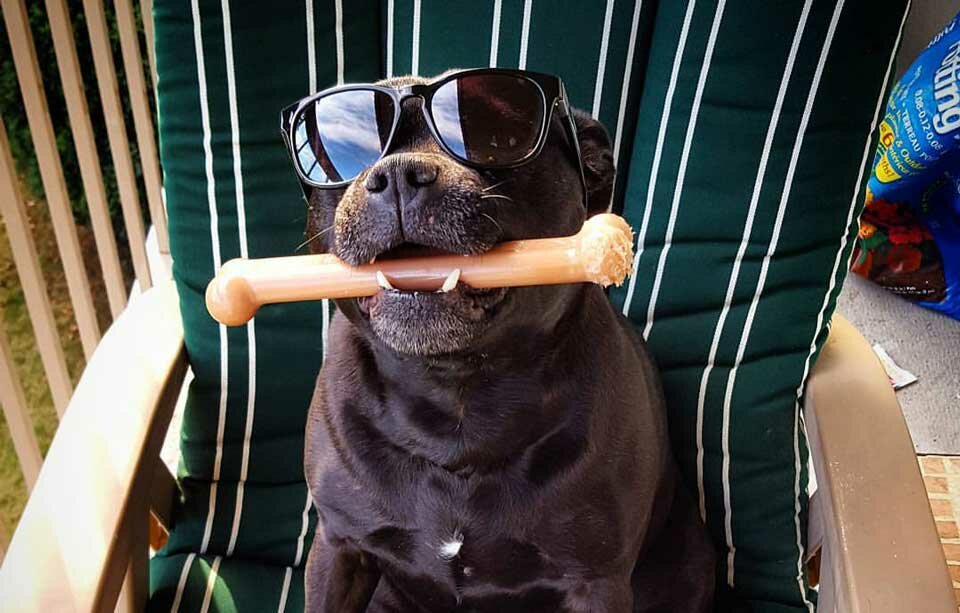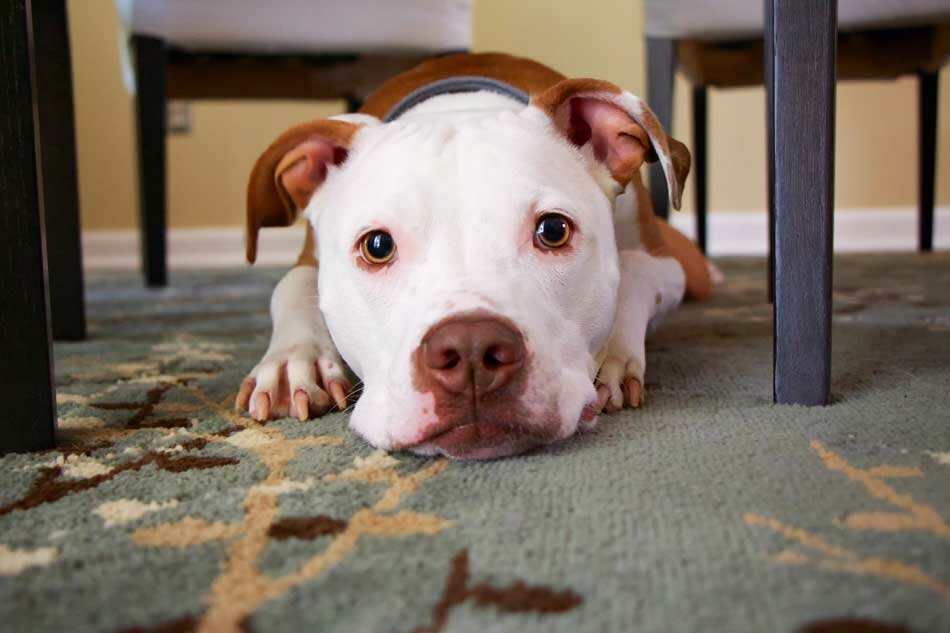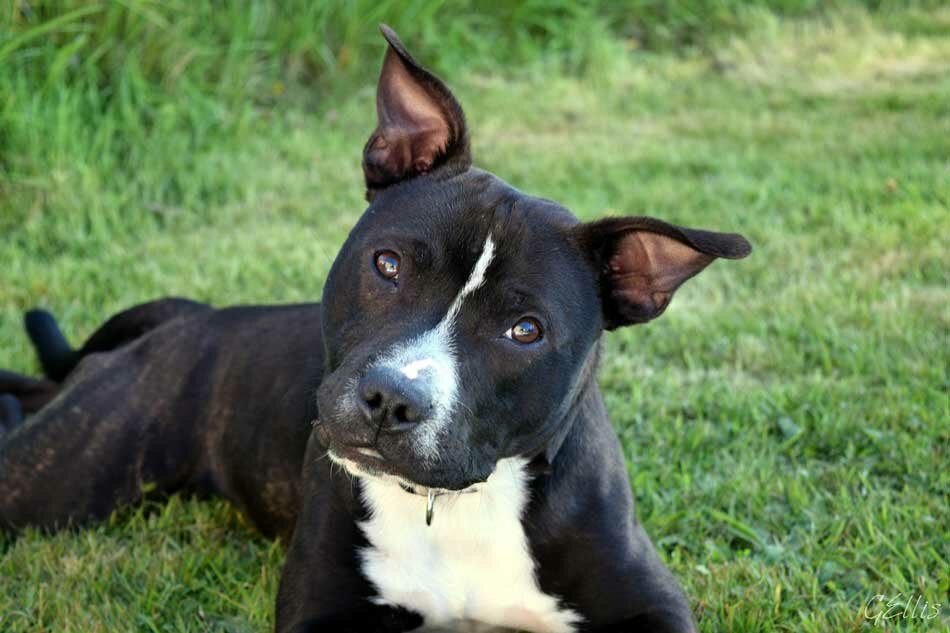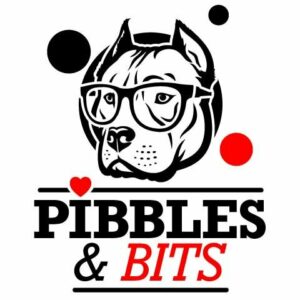Among one of the most famous dog breeds on the planet, the American Pit Bull Terrier is quite possibly one of the most misunderstood breeds of dog. You may be considering bringing an American Pit Bull Terrier into your home and wondering if they are they right dog for you when it comes to training.
Are American Pit Bull Terriers easy to train? American Pit Bull Terriers can be easy to train. They are a highly intelligent breed of dog with an exceptional eagerness to please their owners. This combination of intelligence and loyalty can make Pit Bulls easy to train, and also very enjoyable to train.
Like any other dog the American Pit Bull Terrier needs consistency in their training, as well as someone who is willing to show leadership, patience, and a calm caring demeanor.
The Pit Bull is an absolute joy to work with when they are taught how to behave. I have a number of tips and resources here in this article that can get you well on your way to easily training your American Pit Bull Terrier.
How To Train A Pitbull – 10 Basic Tips
There are few basic tips when it comes to how to train an American Pit Bull Terrier, and these can be used for any breed of dog really, but are important especially for large Bully breed dogs.
These tips can make all the difference between a large, powerful misbehaved dog, and a large powerful well behaved and balanced dog.
Keep it short
Whether you are working on basic obedience commands or more advanced tricks, keep your training sessions short. 15-20 minute training sessions are a great chunk of time to practice and keep your dog focused and engaged.
It may not seem like a lot of time, but over time, it really adds up.
Keep it consistent
Short 15-20 minute training sessions done everyday or a couple times throughout the day can reap great rewards in both the short and long term. This will continually reinforce the learning you are trying to pass to your American Pit Bull Terrier, and will also strengthen your bond with them daily.
Keep it fun!
The American Pit Bull Terrier loves to have fun, and making training engaging for them in your 15-20 minute daily sessions will ensure they are eager to continue learning. They are very eager to please their owners, and if you make it fun for them they will learn much faster.
Keep it positive
Combining engaging activities with positive reinforcement is a win win when it comes to training your Pitbull. They respond very well to positive reinforcement.
If you find yourself getting frustrated, angry, or even yelling, then it’s time to stop the training session and try again later. Both you and your Pitbull will do better when things are done in a positive manner.
Keep them fit
Ensuring your American Pit Bull Terrier is getting the proper nutrition, and the right amount of food can ensure they have the most optimal cognitive functions, as well as avoid becoming overweight, which can lead to other health issues.
A sick and overweight dog is not willing to train like a energized healthy one is ready to train.
Give them exercise
American Pit Bull Terriers are full of life and energy, sometimes endless energy it may seem. Giving your Pit Bull a good amount of exercise before a training session can help them focus on the task at hand.
If you find your dog is distracted and buzzing with energy, perhaps a brisk walk before training is needed.
Give them activities
Giving your American Pit Bull physical exercise is important, and equally as important is mental exercise. Giving your dog activities to stimulate their brain can provide fantastic results when it comes to behavior, and engaging them in training sessions.
Give them friends
Basic obedience is important, and a few tricks can be cute, but training your American Pit Bull Terrier to be around other dogs and animals is very important.
Early socialization is one of the biggest factors in raising a well behaved and balanced Pitbull. They learn how to play, interact, and be social with other dogs, and people.
Expose your Pitbull puppy to as many dogs, people, sounds, smells, and different environments as you can.
Give them rules
Sit, stay, down, off, and leave it are a great start for commands, but understanding rules of the household are as well. Your Pitbull needs to understand their boundaries, whether that be not being on your bed, or jumping up to greet you.
Work on establishing boundaries both in the home and personally.
Start early
Start your training early with your American Pit Bull Terrier. Like children, puppies are little sponges and will learn a lot and fast. This can be learning good behaviors as well as learning bad behaviors, so it’s important you begin early to ensure your Adult Pitbull is balanced and obedient.
These are all invaluable lessons I have gathered over the 10+ years of working with dogs, as well as being an owner of a Staffordshire Bull Terrier. My Staffy Ruby is one of the most well behaved, loving, and balanced dogs you could meet, and it’s all thanks to the tips above, and these specifics below.
 Ruby My Staffordshire Bull Terrier
Ruby My Staffordshire Bull Terrier
What Is The Right Age To Train A Pitbull?
People often ask what is the right age to train a Pitbull puppy, and the answer is always, right away. Yes that means you begin your training sessions from the minute your 8 week old puppy, or 8 year old adopted adult Pitbull comes to your home.
Establishing your bond with your new dog comes with them understanding what is expected of them in terms of behavior, and you need to teach them that. Remember always to keep it short, fun, positive, and especially consistent. Start right away, and practice every single day.
How To Train A Pitbull Puppy Basic Commands
Laying the foundation of your training with your Pitbull puppy is one of the most important things you will do as a responsible owner. This initial training can take a little while, or your American Pit Bull Terrier puppy will be easy to train, either way, be patient and practice these 5 basic commands often.
Make sure you have some really good smelling and tasty treats ready. Your Pitbull puppy will be at full attention when they know you have something yummy. Everytime they perform any of these commands, even for a few seconds, they get rewarded.
Increase the duration of the command over time, but at first a little progress is still progress. Give them the reward.
A cue word like “yes” or “good job” should also be used when rewarding to let your puppy associate that cue with having completed the command. Some people prefer the clicker method of training in place of the verbal cue, which works as well, you can find some really good inexpensive clickers on Amazon.
Sit
Do you have a treat in your hand? Good. Let your dog know that you have it, let them smell it and be aware of which hand it is in. Then follow these 3 simple steps
- Place the back of your treat hand near your dogs nose
- Raise your hand up so that your dogs head follows, and their butt goes down
- As soon as they sit down, you say “Sit” and give them that delicious treat. Followed with a “yes” “good job” or whatever praise cue you choose
Repeat this numerous times, and gradually increase the time between the “sit” and the reward.
The reason I mention placing the back of your hand close to their nose is you can use this as a hand signal eventually. I don’t even need to say “sit” to my Staffy anymore, just show her the back of my hand and move it up, and she sits.
Stay
I already know you have a treat in your hand and your dog knows it, so let’s begin.
- In your non-treat hand make a flat palm stop motion and say “Stay”
- Take a step or two back
- If they have remained where they are, give the release cue “yes”, “good job” and let them come get their treat. Lots of praise afterwards.
Repeat this a few times taking more steps back each time. Always use the hand signal when you say “Stay” to associate the two for easier commands down the road. Once they nail the stay, we are ready for “Leave it”
Leave it
This is going to be similar to the stay, but without the treat in your hand. I use the one finger in the air hand signal. My Grandmother would do this same hand signal to me when fresh cinnamon buns came out of the oven.
Pointer finger up, palm facing your Pitbull puppy. Doing this on the floor with your puppy will be easier at first.
- Have your puppy sit and/or stay and place a treat on the floor between you and the dog
- Say “leave it” with your hand signal
- After a few seconds you can give the release cue “yes” and they can come collect their reward.
Repeat this adding more time and distance between you and the treat. Give lots of praise when they “leave it”. When you get to the more advanced version of this you can work on your dog giving direct eye contact and not looking at the treat.
Ruby My Staffy, Master of “Leave it” and “Down”
Down
The “Down” command should be used specifically to get your dog to lay on their belly. I have often seen this used for that as well as getting the dog to stop jumping up on someone or something. Stick to one command for one specific response. Got your treat? Good. Get down on the floor again with puppy.
- Using your treat hand get your dog to follow your hand as you move it palm down to the floor.
- Once your dog is following your hand to the floor, move your hand towards you and away from the dog along the floor to hopefully get them to stretch out their body along the floor to their belly.
- Once they have the belly on the floor in the down position you say “Down” and give them the reward.
This one may take a little practice, but keep going, stay positive, don’t get frustrated. If they really don’t get it a few times, do a few quick “Sit” commands then return to the “Down” practice. This will keep your dog engaged and not frustrated.
Come
Last but not least is how you train a Pitbull puppy to come when called. This one will especially come in handy for all sorts of situations. Making this one fun and rewarding is very important. When your dog hears the command “Come” they should be thrilled to run right up to you.
- Start training this command with a leash on your dog. Get on the floor, give a hand gesture motioning to yourself and say “Come”
- Gently pull on their leash toward you if they don’t naturally come.
- When they are right in front of you they get the yummy treat and tons of praise.
Once they are doing this with no leash prompt you can remove the leash and increase the distance between you. Try doing a “Stay” and have the release “Come” to practice both skills. Once they have this skill down, try practicing in different environments with more distractions.
Two important things to remember when using the command “Come” to ensure you get the response you want are:
Never repeat yourself: Make sure you have your dogs attention before using the “Come” command. We have all seen those owners at the bark yelling “Come! Come! Fluffy Come! Come Fluffy! Come!” and the dog has completely tuned out. This is called poisoning the cue. It will become background noise to your dog.
Never ever ever ever discipline or scold your dog when they come: If your Pitbull Fluffy is at the park or in the yard and is maybe not responding to “Come” right away, but they do eventually return, never punish them.
You do not want them to associate “Come” and returning to you as a negative, this defeats the entire purpose of the command.
Resources & Reviews – The Best Dog Training Courses, Books, & Tools
How Do You Feed A Pitbull?
Feeding your Pitbull is a ritual that should be taken seriously and not just a mindless daily routine. This is important for several reasons:
- Adding another layer of obedience training and teaching your dog patience.
- Removing any potential for food related aggression in the future.
- Prevent fast eating and panicked eating.
- Preventing potential obesity issues from grazing style of eating.
Feeding my Staffordshire Bull Terrier from the first weeks she arrived home, all the way up to now 10 years later, has been a twice a day ritual. She knows that when it’s time to eat she has to be in a calm state, and wait for the cues.
This ritual has made any food related issues non-existent with her. She eats at a slow pace, I can touch her food, touch her bowl, touch her, have other dogs around, have kids around, it doesn’t matter she is never protective of her food.
Here is our ritual that I would highly recommend when feeding your American Pit Bull Terrier.
Get their food ready in their bowl on a counter, hopefully you are using a premium quality dog food, if not you need to get over to my best dog food resource page.
- Have your Pitbull come and sit nice and calmly next to their eating area. Calmly is the key word.
- Once you see they are calm, place their food bowl on their eating mat.
- For my Staffy she needs to give me eye contact and not focus on the food. This is a great training skill to work on, and shows that I am still in charge of the food.
- Once she has given some good eye contact I give the release cue “okay” and point to her bowl. Usually followed with a “Very good Girl!”
- When training your puppy interrupt their feeding for a few seconds by lifting the bowl away and repeating the steps above. This again shows you are in control of their food.
This ritual has the benefit of adding that extra layer of obedience, and instilling a sense of calm while your dog eats. Dogs that eat in a panic or rush can suffer minor to severe health problems as a result. Anything from excessive gas, to potentially fatal bloat problems.
…Rate of eating is also a contributor. Fast eaters have five times the risk than dogs that are slow eaters.
American Kennel Club
If you are using these techniques and your dog still is eating faster than you think they should, or you want to give them a little extra mental stimulation, using a Kong for their meals or a slow feeder can be a great option as well.
My feeding ritual with my Staffy is also a good way to prevent overfeeding and potential obesity. Dogs that are not fed as a ritual and are just left to graze on their food throughout the day can become overweight. You don’t always remember how much was in their bowl, and just top it up whenever you see it running low.
Feeding your dog in this way can cause them to overeat. I know many people say that their dog just likes to graze and they don’t eat all at once. That is fine for them I suppose, but if my Staffy is not interested in her breakfast I typically just place her bowl back on the counter, and try again at dinner time. If I am home during the afternoons and she let’s me know she is hungry now we do the ritual then.
Doing things this way may sound mean, but this is anything but. I am able to monitor exactly how much she eats, and keep a mental note that she might not be feeling well if she skips a meal. I can properly assess her health accurately by using this method versus grazing.
Can Pitbulls Be Crate Trained?

Not only can Pitbulls be crate trained, but it is my opinion that you should crate train your American Pit Bull Terrier. This can be an incredible tool for both you and your dog, and by properly working on their crate training you can reap some tremendous benefits.
The first benefit to crate training your Pitbull puppy is for potty training. By using a crate you can decrease the amount of accidents in the home significantly. The second benefit is it gives your dog a place to relax, feel safe, and take some quiet time for themselves.
This second benefit can be especially important when crate training you American Pit Bull Terrier, as they can be prone to separation anxiety. They are a very human oriented breed of dog, that loves being around their family all the time. Crate training them you give them a place to be calm and relaxed while you are away from home.
How To Crate Train A Pitbull Puppy
Crate training your Pitbull puppy can be easy and enjoyable for you both. Just like basic obedience some practice and gradual increases in time will pay off in the long run. Follow these simple steps and guidelines and your Pitbull puppy will love their crate in no time.
- Start simple. Grab your trusty delicious treats and lead your puppy into their crate. Don’t shove or force, but lead, and maybe a gentle coax at most.
- Once they are in the crate, get them in a down position, and when they are calm. Give them the treat in the crate and invite them out after.
- Next do the same thing, but this time close the crate door. Wait 15 seconds, if they are calm. Treat in the crate, open the door slowly, and invite them out. Make sure they don’t just burst out. Invite them. Use a stay command if needed.
- Do it again, this time for 30 seconds. Then again for 1 minute. Again and this time leave the room for 30 seconds. Then again but for 1 minute. Each time reward them in the crate when they are calm, and invite them out after.
- Keep going with time duration extending more and more, soon your puppy will understand this is a place to be calm, and you will always return.
Important things to NOT do when crate training
Make sure your dog has a comfortable crate. Have nice soft, clean blankets for them to relax on. Maybe a chew toy that they won’t be at risk of destroying or choking on.
Remove their collars when placing them in the crate to prevent any potential snags on the crate. Maybe place a small radio by the crate that plays classical music.
Whatever it takes to make this place an oasis of relaxation for your Pitbull.
How Big Of A Dog Crate Do I Need For A Pitbull?
A dog crate for your Pitbull should be big enough for them to stand up and turn around comfortably. Dogs like to have a smaller den like space to relax and snooze in, but they also need enough room to stretch a bit.
There are all different sizes that will accommodate your adult American Pit Bull Terrier. If you are starting from a Pitbull puppy and don’t want to be buying a new crate every 6 months for the next few years then I highly recommend the iCrate from MidWest homes.
This crate comes in a variety of sizes but more importantly comes with a divider that you can use to adjust the crate size as your puppy grows older. One high quality crate that will last you from puppy to adult Pitbull. The iCrate is one of the top rated dog crates on Amazon and a great price.
How Long Does It Take To Train A Pitbull?

Now that we have covered a few of the basics your last question might be how long does it take to train a Pitbull. In basic obedience anywhere from a couple weeks to a couple months. Pitbull puppies learn fast and can master basic commands by the age of 5 months.
That being said, training your American Pit Bull Terrier should never really stop. As I mentioned at the very start of the post, consistency is a key component of training any family pet. This is a way to further strengthen your Pitbull’s skills and your relationship as an owner.
Never stop training. Always be having fun training. Pitbulls love engaging with their owners, and they love a good challenge. There is no better way I know to keep your Pitbull happy and balanced then to be working with them daily on basic commands, tricks, challenges, and getting out for a nice walk together.
The American Pit Bull Terrier is easy to train and can only take a few months to master some skills, but making it a lifetime of learning and engagement is the best way to give them a fulfilling life.
